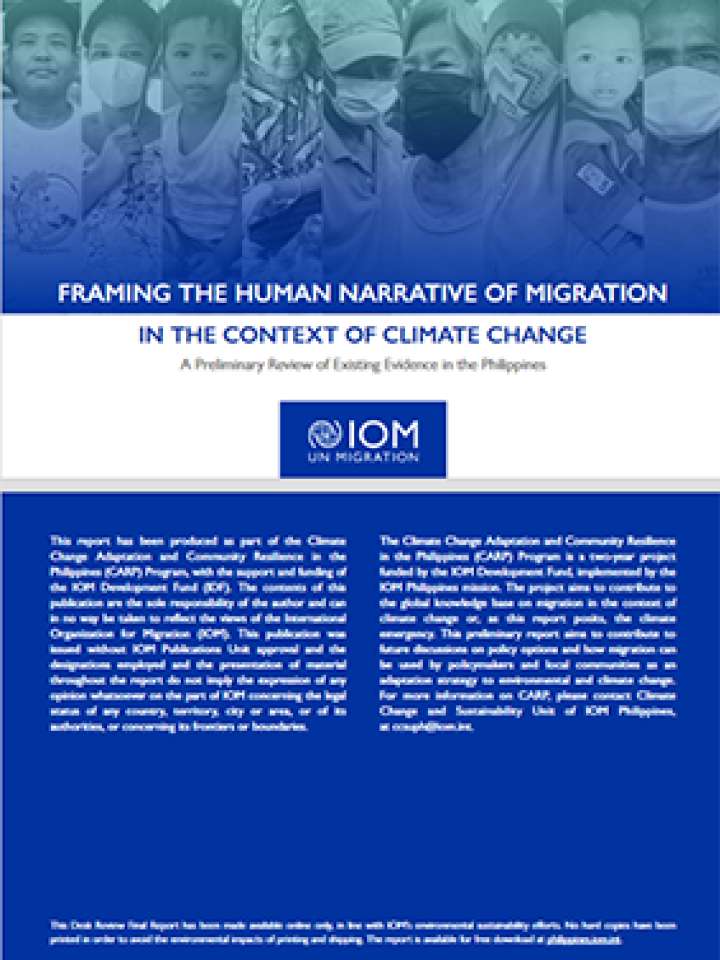Framing the human narrative of migration in the context of climate change
This report explores the question "What is the current state of migration in the context of climate emergency in the Philippine setting?" To do so, the study utilizes two types of evidence a) literature review and b) exploratory interviews with community members and local governments. All interviewees in this study were defined as being vulnerable to the effects of the climate emergency, ensuring that the local human narrative on migration was captured.
The report had the following key areas of inquiry:
- How does the climate emergency manifest itself to a Filipino?
- What is the current understanding of who is vulnerable to the climate emergency? What is the human narrative behind the data?
- What solutions are being undertaken to manage vulnerabilities,including by developing a clearer understanding of the role that migration plays as an adaptive mechanism?
- What kind of support and interventions can contribute towards climate resilience?
This research reflects two main findings:
- The relationship between the climate emergency and migration is mediated by the quality of one’s livelihood as well as access to security, peace and stability.
- Planned and orderly migration, such as permanent and circular migration, occur as voluntary adaptive strategies for the climate emergency, while unplanned migration, such as distress migration and relocation, occur as involuntary adaptive strategies.
Explore further
